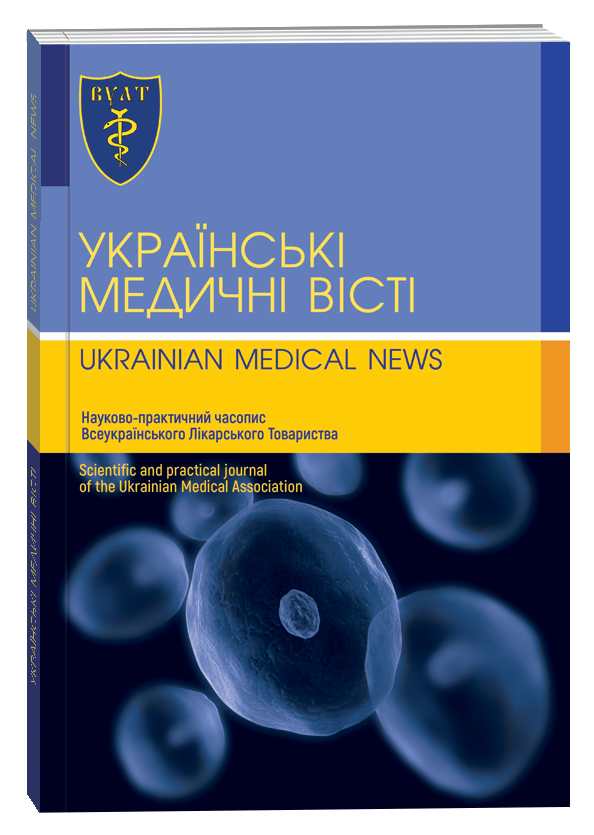PURULENT NECROTIC AND COMBINED CHRONIC PATHOLOGY OF THE HAND AND FOOT DISTAL AREAS (SURGICAL ONYCHOPATHOLOGY, SURGICAL NAIL PATHOLOGY): SOME ASPECTS OF COMPLEX TREATMENT
DOI:
https://doi.org/10.32471/umv.2709-6432.87.1370Keywords:
purulent-necrotic chronic and combined pathology of the hand and foot, panaritium, surgical onychopathology, complications of onychomycosis, osteomyelitis, complex treatment.Abstract
The article presented the results of the study of purulent-necrotic chronic and combined pathology of the distal parts of the hand and foot in the context of analysis of lesions of the distal nail phalanges of the fingers (surgical onychopathology). Nosological forms, some clinical features, complications are stated, generally accepted and author’s views on complex treatment are presented and substantiated. The need for complex research of chronic surgical onychopathology is primarily determined by a significant of uncomplicated and complicated cases, especially recurrent cases. In the specialized professional literature are a significant publications on the nail plate pathology, but the surgical aspects of the distal (nail) phalanx pathology allotted a minimal, secondary role. The aim of the work was to optimize the schemes of complex treatment and surgical interventions of some chronic destructive purulent pathology of the distal parts of the hand and foot, (onychopathology), when ascertaining of some combined cases associated with onychomycosis. For a 15-year period (2006–2020) some cases of chronic purulent-necrotic processes in 1838 patients aged 5–92 years: 1007 men and 831 women, uncomplicated, complicated and combined lesions were studied. Imperfection of surgical techniques determined for more than half of the causes of recurrence, including cases of ingrowth with complicated subungual hyperkeratosis or onychogryphosis, χ2=20,13; p<0,01. Be claimed that the most formidable complication of superficial chronic purulent-necrotic lesions is phalanx osteomyelitis, bone panaricium (panaritium osseare or osteo-articulare), pandactylitis, some clinical diagnostic criteria and principles of treatment are formulated. Precision necrectomy promotes the purulent-inflammatory process elimination. Low-traumatic nail removal or nails resection through onycholized structures by transeponycheal incision (block eponychectomy) determines a statistically significant increase in wound healing rate, Popova index etc (χ2=32.14, p<0.01), the decrease in intraoperative nail phalanx trauma (χ2=20.13, p<0,01), reduces the risk of other fungal contamination (χ2=27.41, p<0,01), is characterized by decrease of a pain intensity (χ2=48.32, p<0,01, Spearman’s ratio (ρ) 0,624–0,692 depending on the analyzed factor), these nuances determines the positive dynamics and improvement of the quality of life of patients.
References
Abrams R.A., Botte M.J. (1996) Hand infections: Treatment, Recomendations for Specifiс Tipes. J. of Am. Acad. of Orthor. Surg. 4.4: 219–230. 2. David N.; Davis J.H. (1987) Gilbert et all. Sanford Guide to Antimicrobial Therapy. URL. www.sanfordguide.com/about/editorial-board/david-n-gilbert/.
Davis J.H. (1987) Clinical Surgery. Vol. 1. St. Louis.-Washington-Toronto: The C. V. Mosbi Compani: 1024 p.
Goettmann S. et al. (2006) Onychomatricoma with pterygium aspect: unusual clinical presentation. Acta Derm Venereol, 86.4: 369–370.
Kim J.Y., Park J.S. (2009) Treatment of symptomatic incurved toenail with a new device. Foot Ankle Int, 30.1: 1083–1087.
Kim M. et al. (2015) Partial Removal of Nail Matrix in the Treatment of Ingrown Nails: Prospective Randomized Control Study Between Curettage and Electrocauterization. Int. J. Low Extrem Wounds, 14.2: 192–195.
Kosaka M. et al. (2010) Morphologic study of normal, ingrown, and pincer nails. Dermatol Surg, 36.1: 31–38.
Leeyaphan C. et al. (2016) Dermatophytoma: An under-recognized condition. Indian. J. Dermatol. Venereol Leprol, 82.2: 188–189.
Schmitt W., Kiene S. (2012) Chirurgie der Infectionen. Leipzig.: Johann Ambrosius Barth: 648 p.
Rakel R.E., Rakel D.P. (2015) Textbook of Family Medicine. 9-th Edition: 1215 p.
Vergun A.R. et al. (2017a) Chronic mycotic-assotiated surgical nail pathology complicated with ingrown nail (nail incarnation): the analyses of clinical cases and complex treatment. International Journal of Medicine and Medical Research, 3.1: 33–40.
Vergun A.R. (2017b) Destructive complicated onychomycosis with nail incarnation: case series, complex surgical treatment. Bulletin of Scientific Research, 4: 56–60.
Vergun A.R. (2017c) Ingrown nail, optimal clinical and morphological classifications: author’s views (own modification) and discussion. Hospital Surgery. Journal of the name of L.Y. Kovalchuk, 4: 46–50.
Vergun A.R. (2018) Surgical nail pathology: some problems of diagnosis and complex treatment. Qualifying scientific work on the rights of manuscripts. Dissertation for the Doctor of Medical Sciences (DSc, doctor of medicine) degree in specialty 14.01.03 «Surgery» (222 «Medicine»). Danylo Halytsky Lviv National Medical University of Ministry of Health of Ukraine, Lviv: 286.
Zavala Aguilar K. et al. (2013) Management of onychocryptosis in primary care: A clinical case. Semergen, 39.6: 38–40.
Zeichner J.A. (2015) Onychomycosis to Fungal Superinfection: Prevention Strategies and Considerations. J. Drugs Dermatol., 14.10: 32–34. 17. Zeng M., Fu S.P. (2012) Meliorated surgical procedure of Winograd for recurrent onychocryptosis. Zhonghua Yi Xue Za Zhi, 92.25: 1767–1769.







